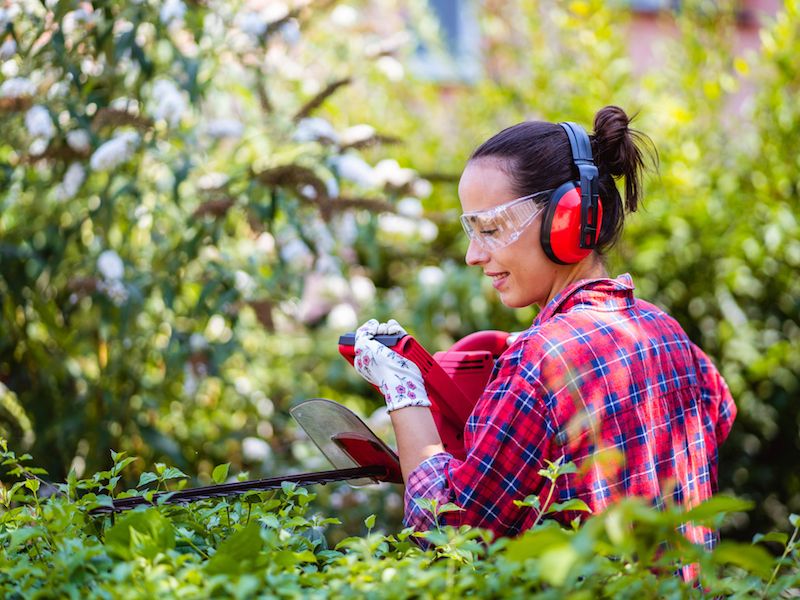
Protecting your hearing is a lot like eating the right way. It’s hard to know where to begin even though it sounds like a smart idea. If there aren’t any apparent noise risks and you don’t consider your daily environment to be particularly noisy, this is especially true. But your ears and senses can be stressed by day-to-day living, so your auditory acuity can be maintained if you apply these tips.
The more you can do to delay the degeneration of your hearing, the longer you’ll be capable of enjoying the sounds around you.
Tip 1: Hearing Protection You Can Wear
Using hearing protection is the most practical and simple way to safeguard your ears. This means taking basic actions to reduce the amount of loud and damaging noises you’re exposed to.
For most people, this will mean using ear protection when it’s required. Hearing protection generally comes in two basic forms:
- Ear Muffs, which are placed over the ears.
- Ear Plugs, which are placed in the ear canal.
Neither form of hearing protection is inherently better than the other. There are advantages to each style. What’s significant is that you find some hearing protection that you feel comfortable with.
Tip 2: When Sound Gets Dangerous, be Aware of It
But how can you tell when to wear hearing protection? We’re used to connecting harmful noise with painful noise. But much lower levels of sound can injure your ears than you might think. After just a couple hours, for example, the sounds of traffic are enough to injure your ears. A vital step in safeguarding your hearing, then, is knowing when sound becomes dangerous.
The following threshold is when sound becomes harmful:
- 85 decibels (dB): This level of sound is harmful after about two hours of exposure. Your hairdryer or a busy city street are both situations where you will find this volume of sound.
- Over 100 dB: This is where you can injure your hearing very quickly. Anything above this threshold can injure your hearing in minutes or seconds. As an example, jet engines and rock concerts will injure your hearing in 30 seconds.
- 95-100 dB: This is about the noise level you’d get from farm equipment or the normal volume of your earbuds. After about 15-20 minutes this level of sound becomes harmful.
Tip 3: Your Phone Can Become a Sound Meter
Now that we have a general understanding of what volume of sound may be dangerous, we can take some steps to ensure we minimize our exposure. The trick is that, once you’re out in the real world, it can be challenging to determine what’s loud and what isn’t.
Your smartphone can now be used as a handy little tool. There are dozens of apps for iPhone, Android, and everything in between that turn your device’s microphone into a sound meter.
In order to get an idea of what hazardous levels of noise really sound like, use your sound meter to confirm the decibel level of everything you are hearing.
Tip 4: Keep an Eye on Your Volume Settings
A smartphone with earbuds is commonly the way people listen to music nowadays. This creates a risky scenario for your hearing. Over time, earbuds set to a substantially high volume can cause considerable injury to your ears.
So keeping an eye on the volume control means safeguarding your ears. You should not raise the volume in order to drown out sounds somewhere else. And we recommend using apps or settings to ensure that your volume never accidentally become hazardously high.
If your hearing begins to decline, earbuds can become a negative feedback loop; you could find yourself constantly increasing the volume of your earbuds in order to compensate for your faltering hearing, doing more damage to your ears in the process.
Tip 5: Have Your Hearing Tested
You might think of a hearing test as something you get when your hearing has already begun to decline. The issue is that it’s not always easy to detect a problem in your ears without a baseline to compare results to.
Scheduling a hearing screening or exam is a good way to come up with data that can be used for both treatment and diagnostic purposes, making certain that all of your future hearing (and hearing protection) choices have a little bit of added context and information.
Pay Attention to Your Hearing
It would be ideal if you could constantly protect your ears without any problems. But challenges are always going to be there. So safeguard your ears whenever you can, as often as possible. You should also get your hearing tested routinely. Use these suggestions to improve your chances.